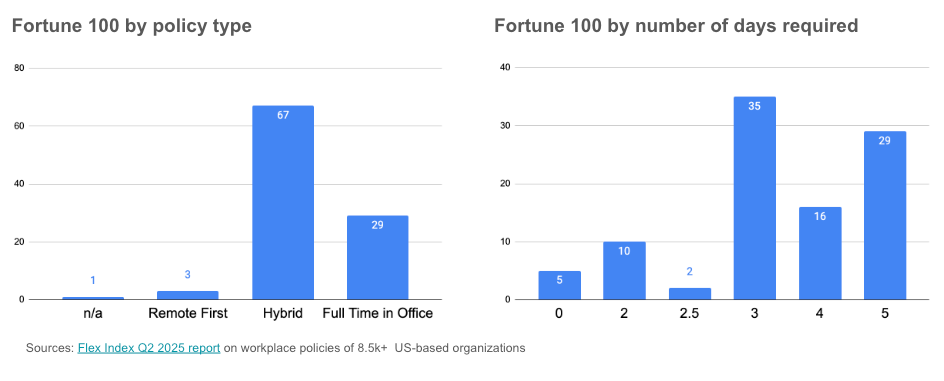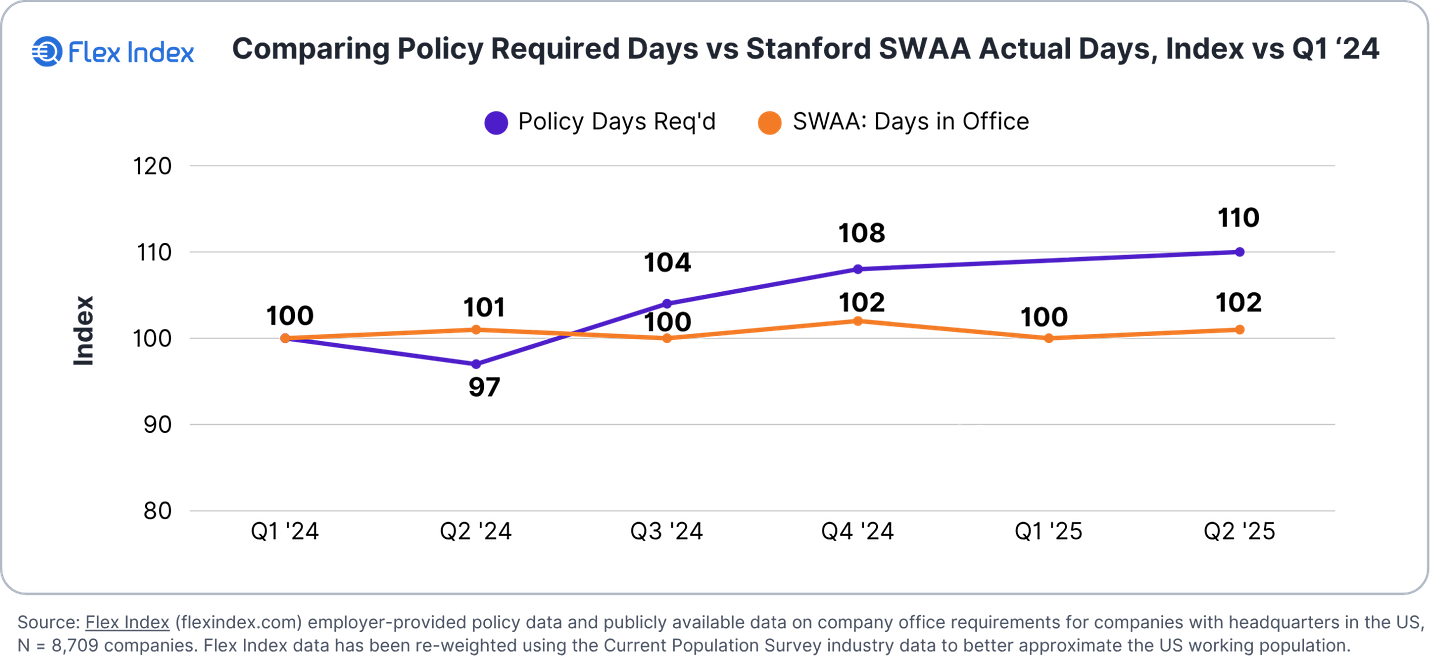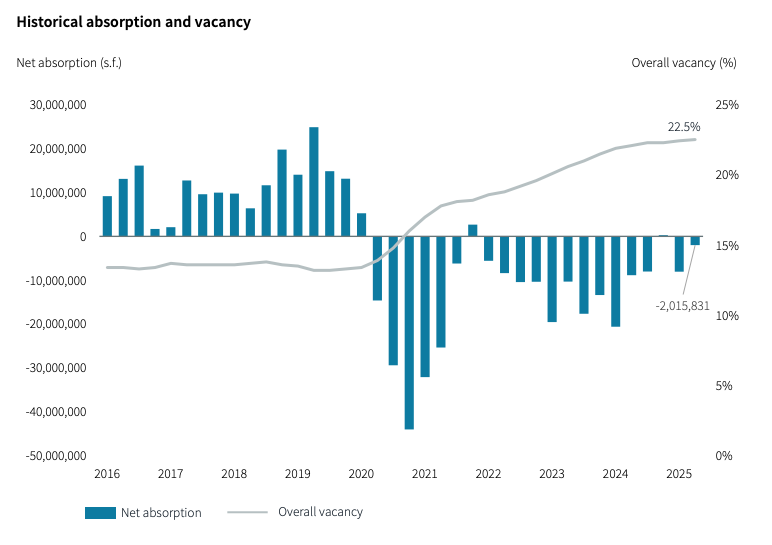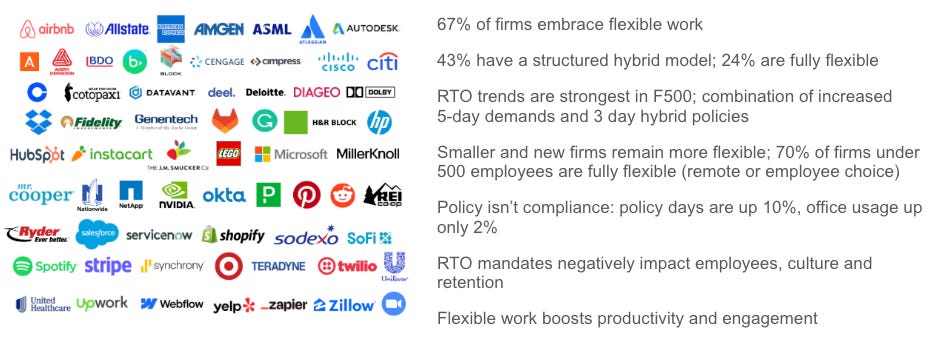67 of the Fortune 100 are Hybrid
Brand-new Flex Index data and latest research continue to point to hybrid as the dominant workplace strategy
While headlines claim 54% of Fortune 100 companies are "fully back to the office," our data paints a different picture — 67% actually maintain hybrid policies, with 3-day weeks being the most popular.
While some reports have claimed more than half of Fortune 100 companies have mandated a full return to office, we stand behind our data. Today’s brand-new Research Report includes the latest Flex Index data on the Fortune 100 companies!
Updating our latest Research Deep Dive
Paid subscribers to the Flex Index get:
Quarterly research deep-dives: 50+ pages of the latest data, trends and research on workplace flexibility — our July Report is here!
Full access to quarterly Flex Reports: Free subscribers get ~3 page summaries; paid subscribers get the full 20+ page reports.
Additional Flex Index deep dives: Industry-specific reports and more in-depth "how to" content for leaders and teams.
We’ve got the July Research Report ready for subscribers, just in time to answer some questions about the Fortune 100.
Fortune 100 Policy Reality Check
We’ve updated our data on the Fortune 100, and here’s what the Flex Index shows as of mid-July including changes announced for September of this year:
29 Fortune 100 companies have full time (5 days a week) office policies
67 have hybrid policies; 3 days a week is by far the most popular program
44 require 4 days or 5 days — adding 4 day hybrid and full-time in office
Our Q2 Flex Report dug into the Fortune 500 and found similar results: 24% of Fortune 500 were full-time in office. Larger companies are trending more towards office-centric policies. Smaller and newer companies aren’t: 70% of companies with <500 employees are fully flexible, as are over 90% of those started since 2010.
Policy is Not Compliance
Cranking up the demands is clearly not cranking up the commute at the same rate so far. The average number of days required by US company policy went up 10% in the last year, but actual office usage went up 2-3%.
Office Market Hits New Vacancy High
Even in the same report, JLL showed that US office vacancies hit a new high of 22.5% in Q2 of this year — if were coming back "en masse" that wouldn't be the case.
Much More in the July Report
In our July report, you’ll also find:
Updated trend data through the end of June from SWAA, the US Census Bureau, Kastle Systems, Placer.ai on office utilization.
The latest research reports on remote and hybrid work’s impact on factors like productivity and innovation.
Best practices from a wide range of firms on managing flexible work.
Along with a new up-front summary section in case you want to share the highlights with the rest of your leadership team!
If you're already a paid subscriber, you'll see the download link below. Not a paid subscriber yet? Upgrade now to take advantage of our limited-time discount—just $80 annually instead of $100!








